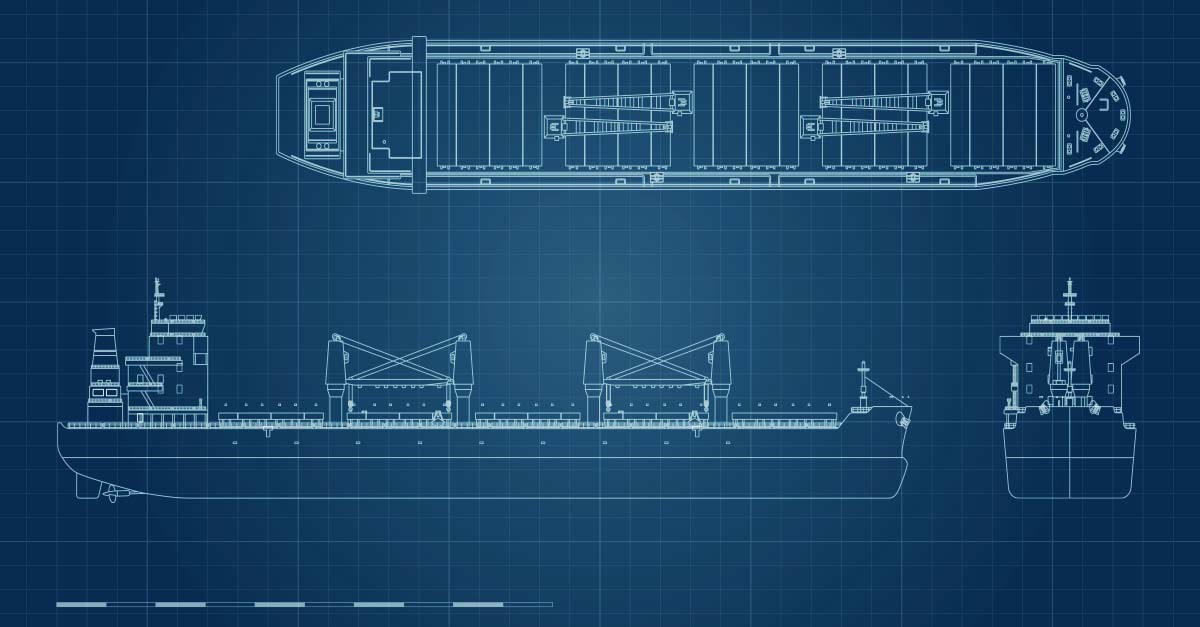In today’s dynamic and ever-evolving maritime shipping industry, the importance of a dynamic commercial solution has never been greater. In fact, around 70% of maritime organizations are in the process of exploring digital solutions. But choosing the right solution and positioning it for success requires organizations to take the time to define what success looks like and gain stakeholder buy-in from day one.
That’s where the business case comes in. A strong and compelling business case can help you identify your organization’s driving need for a new solution, paint a picture for its ideal future state, highlight the solution’s ability to serve each stakeholder, and put a thoughtful implementation plan in place. The most successful business cases are those that are built on a true understanding of the organization’s strategic and functional goals.
Central to any business case is the single most important thing, or SMIT. This is the primary driving force that will serve as the cornerstone of your business case, a top strategic challenge or objective that should be powerfully addressed through the adoption of your intended solution. But with so much on the collective mind of the maritime shipping ecosystem, how are you to choose just one? Follow these four steps to arrive at your SMIT and begin building your case.
1. Make a list.
With shifting industry dynamics and a myriad of challenges both inside and outside of the organization’s control, it is not difficult for maritime shipping organizations to come up with a laundry list of key business challenges and objectives. What can be difficult, however, is choosing just one. Start by listing everything that’s on your mind. Some prevalent objectives for today’s maritime shipping and marine logistics organizations include managing the risk associated with evolving regulations, increasing stakeholder visibility across the organization, enhancing process efficiency, and improving environmental sustainability. Creating a list of some of your organization’s primary strategic priorities is in an important starting point as you begin to build your case.
2. Narrow it down.
Chances are, this list is quite exhaustive. In order to narrow it down, consider the importance, longevity, and complexity of each item on your list. Let’s use environmental sustainability as an example. First, examine its importance. Environmental sustainability is among the most strategically important objectives for the entire maritime shipping ecosystem, and the industry as a whole has agreed to prioritize it moving forward. In addition to its obvious ecological importance, this objective is also commercially important. More sustainable decisions are frequently more cost effective decisions, and focusing on reduced consumption is good for business. Now, consider the objective’s longevity. Environmental sustainability will only increase in importance over time. It will continue to be a priority three, five, and even ten years down the road. This signals an objective worth investing in. Third, assess its complexity. The best SMITs are not easily solved. Similarly, environmental sustainability requires organizations to measure consumption, track emissions, and incorporate these considerations into daily workflows through robust decision support. It is quite complex to solve.
3. Talk to key stakeholders.
Once you have your list narrowed down to two or three potential SMITs, it’s time to have conversations with your organization’s key stakeholders. SMITs are typically cross-functional, so your key stakeholders will more than likely have a perspective to share. Talk to them. What do they see as your chief strategic priority? How is their respective functional area impacting your ability to achieve this goal? Stakeholder conversations might change your perspective. Perhaps you thought your primary goal was regulatory risk, but stakeholder conversations reveal that freight exposure is actually having a greater business impact. Holding discussions with users across functions will enable you to more readily identify one, overarching objective to guide your business case while sowing the seeds for buy-in as early as possible.
It’s important to note that choosing your SMIT does not disqualify your business’ other key objectives. It is intended to set the tone for your business case, and as you address your SMIT, addressing your secondary objectives will naturally follow.
4. Address this objective with the solution.
After landing on your SMIT, you can begin to craft your business case. Your business case should draw a clear connection between your SMIT and your intended solution. How does the solution support you in achieving your SMIT? How does it enable each key stakeholder to play their part as you work towards this objective? Your SMIT is not just a starting point for your business case, but will remain a core focus as you present your case, prepare for implementation, and, ultimately, begin utilizing the solution. Make sure you define SMART objectives to advance this goal, and then assess your progress long after solution adoption.
Build Your Case for the Veson IMOS Platform You’ve chosen your SMIT—now, let us help you build your case. The Veson IMOS Platform (VIP) delivers a dynamic suite of solutions to serve each of your business’ key stakeholders and empower you to address your top strategic priorities. Read our quick guide to learn how you can start building an effective business case for the solution today. Ready to take the next step? Contact a Veson representative.



 Aidan Williams
Aidan Williams
 Antoine Grisay
Antoine Grisay
 Josh Luby
Josh Luby